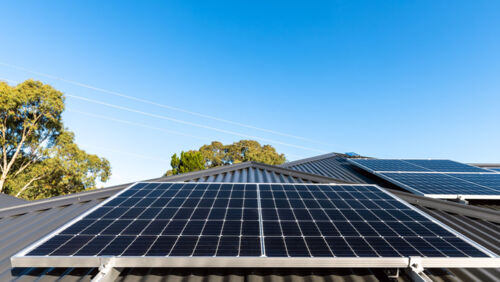How to declutter your home and stop the influx of stuff
By Susan Hely
My family is very good at buying stuff.
When I clear out our cupboards once a year - partly to make room for new stuff - I'm appalled at how much money I've wasted.
I try to give stuff away to friends and relatives but often they complain that they have too much themselves. How did we accumulate so much?
A clever explanation, The Story of Stuff by Annie Leonard, is on YouTube.
One of the startling revelations in Leonard's animated documentary is that it takes 70 garbage bins of junk to make every garbage bin of junk I throw out.
I remember the clutter-free homes of my grandparents. They repaired broken goods and clothes.
The best way to cut down on accumulating is to stop buying. Not only does it save money, it also frees up valuable time. While much of my clutter belongs to my kids, I'm the one who buys it for them.
There is a movement called Buy Nothing New. The challenge is to put new purchases on hold and reassess what you need; think about where things come from and the finite resources used to make them. And where does all the stuff go when you chuck it out? Often into landfill.
While you have to pay for food, medicine, basic toiletries, the mortgage, utilities and credit card debts, Buy Nothing New asks you to give up DVDs, electronics, clothes and home items.
Why not buy second-hand, recycled, vintage - whatever you want to call it. Increasingly women are having "swish" parties where they swap clothes, jewellery, shoes and accessories.
There are loads of second-hand shops and websites where you can buy just about everything. Gumtree and eBay have created a whole new way of buying and selling second-hand goods online.
The Australian Buy Nothing New campaign asks people to sign up for a month - usually October. Eight thousand Australians gave it a go last October.
But Emma Griffin and her young family set themselves the challenge of buying nothing new for a year.
Griffin believes she saved about $10,000. She runs a business, PanelPop, with her husband Nick and others that rescues materials from landfill and uses them in artworks. See panelpop.com.au
The growing vintage shops are being joined by charities. Victoria's Brotherhood of St Laurence launched its vintage Hunter Gatherer brand. You can buy vintage items online from the Salvation Army.
Some of these stores have long histories. Reverse Garbage was set up in 1975 by teachers, community workers and parents as an industrial re-use centre and bought a truck to collect materials from all over Sydney. See reversegarbage.org.au
One problem is "built-in obsolescence".
When my four-year-old refrigerator broke down, the repairman told me refrigerators are not meant to last these days.
But it's not good for the planet to put plastic and electronics into landfill. So buy quality electronics and recycle them rather than throw them out. It's always a good money-saving strategy to ask: "Do I really need this?"
Strategies
- Ask yourself "Do I really need it?"
- Visit second-hand stores
- Repair rather than replace
- It's cheaper to ask your neighbour or relative if you can borrow something
- Hold a swap shop: friends bring five things to swap.
- Go "swishing" - it's the new fashion experience where you swap clothes, jewellery, accessories and shoes with acquaintances.
- Consider your purchases carefully when you start buying new again.
The net option
For more about the Buy Nothing New movement in Australia go to buynothingnew.com.au.
To buy or sell second-hand goods there are the big websites ebay.com.au and gumtree.com.au.
To list things you no longer need or to find second-hand items, see www.au.ziilch.com
For more than 100,000 catalogued books see brotherhoodbooks.org.au
Get stories like this in our newsletters.



